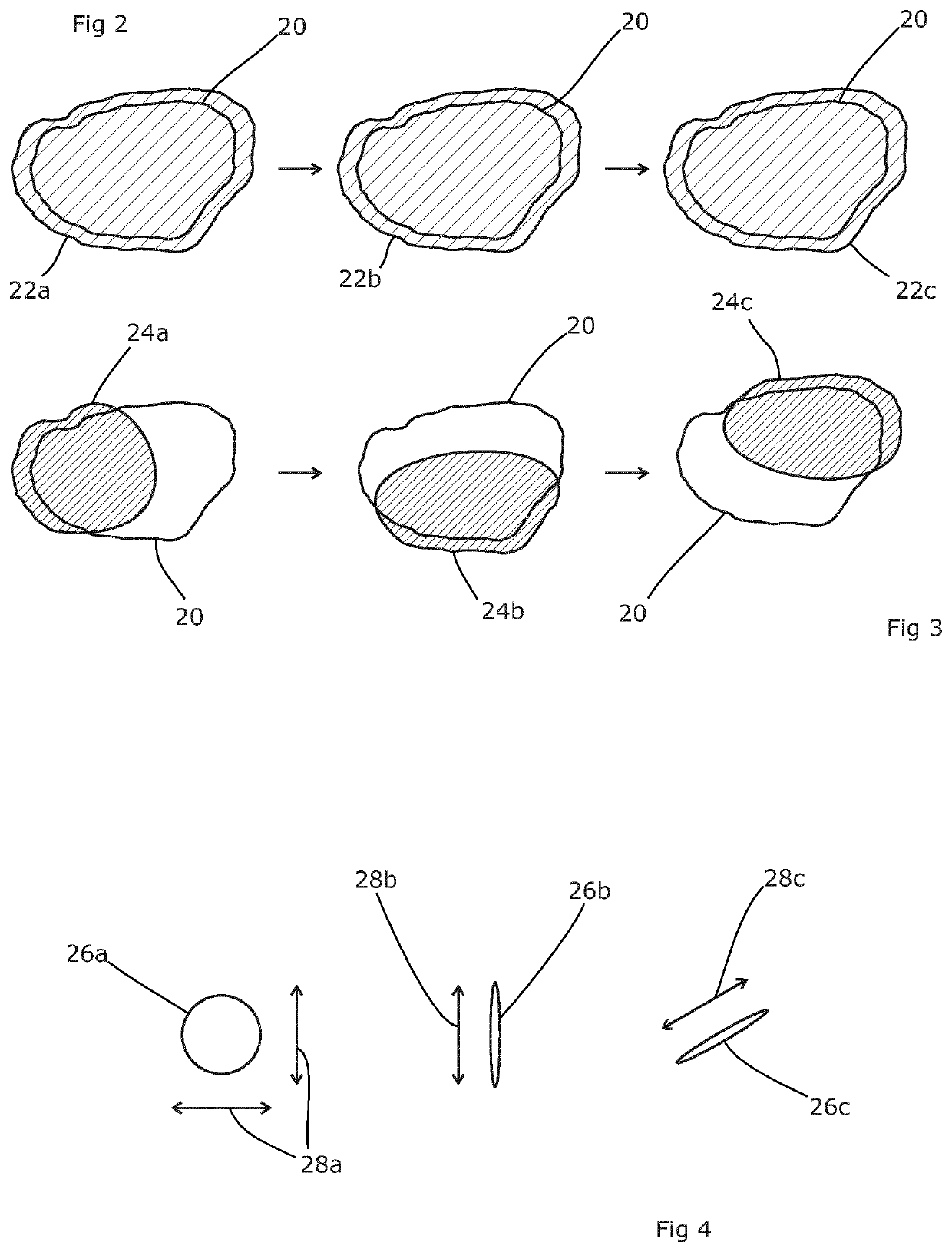Radiotherapy planning systems
a technology of radiotherapy and planning system, applied in radiation therapy, x-ray/gamma-ray/particle-irradiation therapy, therapy, etc., to achieve the effect of more accurate or reliable planning process and faster or more accurate planning process
- Summary
- Abstract
- Description
- Claims
- Application Information
AI Technical Summary
Benefits of technology
Problems solved by technology
Method used
Image
Examples
example 1
Time-Dependent Modelling
[0036]The growth of gliomas, a type of brain cancer, can be modelled as a reaction-diffusion type partial differential equation. Such a model has also been extended to incorporate the effect of radiation treatment. Let c(x,t) denote the concentration of tumour cells at location x (three dimensional) and time t. The time evolution of the concentration can then be determined from the partial differential equation:
∂c∂t=∇·D(x,t)∇c+ρ(x,t)c-R(x,t,d(x,t))c
[0037]where D(x,t) is a (possibly space- and time-varying) diffusion tensor, p(x,t) is the net rate of proliferation and R(x,t,d(x,t)) represents the effect of radiotherapy (which could be modelled using the LQ model, for example). Whatever the model of the treatment effect, we consider it being a function of parameters (e.g. intrinsic radioresistance, oxygenation, repair rates, concentration of pharmaceuticals, cell cycle phase) that may have both a spatial and temporal dependence.
[0038]If we define the right hand...
example 2
Temporal Dose Painting with Molecular Imaging Data
[0041]There is a known link between the microenvironment of a cell and its surrounding and the effect of radiotherapy; for example, an ample supply of nutrients allows the tumour to grow faster (e.g. due to increased cell proliferation) and may increase the repair rate. It is also well established that low oxygen levels make cells more resistant to radiation. Molecular imaging (also known as functional imaging or physiological imaging) techniques such as positron emission tomography (PET), functional magnetic resonance imaging (fMRI), dynamic contrast enhanced computed tomography (DCE-CT) and magnetic resonance spectroscopy (MRS) allows direct imaging of the local chemical composition. This imaging can be done either during treatment (online) or not (offline). Online imaging is achievable with systems such as a combined MR and linear accelerator, or a radiosurgery system equipped with X-ray imaging capabilities. The information as to...
example 3
Inter-Fraction Modulation—Unequal Fractions
[0043]Concerning the inter-fraction delivery, the different time-scales of cell mechanisms such as cell proliferation and repair mean that it might be beneficial to divide the treatment into a set of unequal fractions. As an example, suppose that a target has an exceedingly high repair rate, on par with the rate of cell killing at low dose rates. Thus, irradiation at low dose rate would have substantially no effect. To be successful, the treatment should instead strike a swift and killing blow to one region of the target at the time. In the Gamma knife case, such a fractionation would even facilitate dose delivery, since the number of different shots in each session can be reduced, thereby lowering unwanted shutter dose.
[0044]This is illustrated in FIGS. 2 and 3, which illustrate a treatment of a tumour volume 20 in three fractions. FIG. 2 shows the conventional approach of equal fractions 22a, 22b, 22c delivered at spaced intervals such as...
PUM
 Login to View More
Login to View More Abstract
Description
Claims
Application Information
 Login to View More
Login to View More - R&D
- Intellectual Property
- Life Sciences
- Materials
- Tech Scout
- Unparalleled Data Quality
- Higher Quality Content
- 60% Fewer Hallucinations
Browse by: Latest US Patents, China's latest patents, Technical Efficacy Thesaurus, Application Domain, Technology Topic, Popular Technical Reports.
© 2025 PatSnap. All rights reserved.Legal|Privacy policy|Modern Slavery Act Transparency Statement|Sitemap|About US| Contact US: help@patsnap.com


